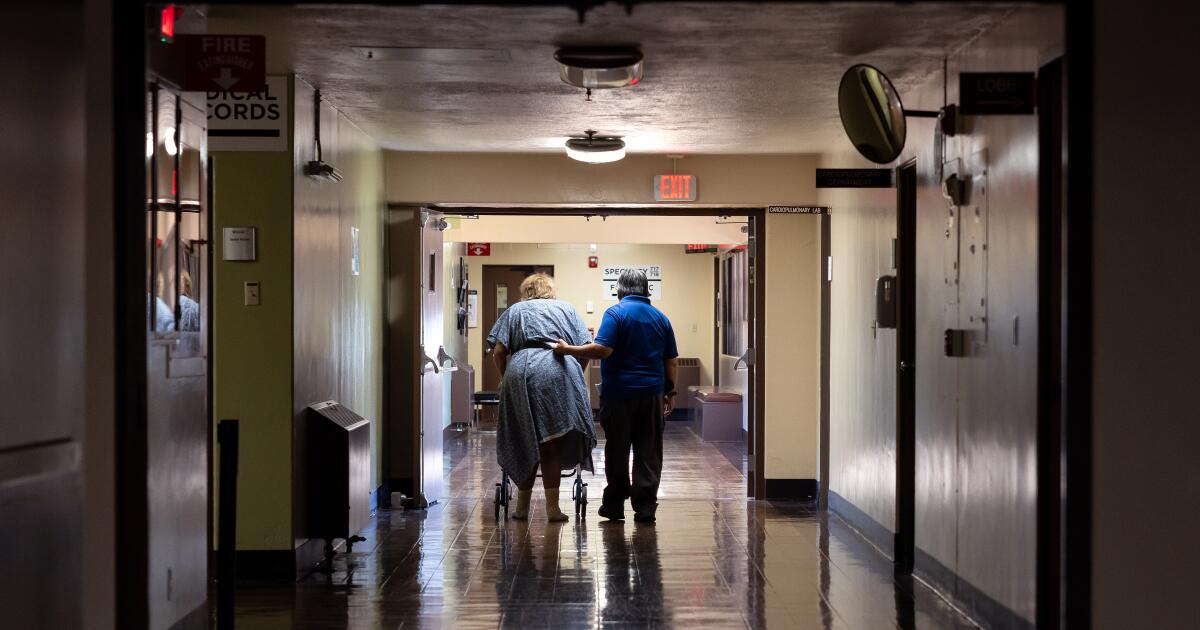I I'm an only child. My father died in a car accident when I was 14 and my mother was 47. We became very close after that. She worked at the university and was an artist: she painted and carved birds. She was a wonderful person who lit up the room and who everyone wanted to be around. She was very generous.
She later developed dementia. I left my teaching position to stay home and look after her. She was very active – she went outside and picked onions, put horses in the wrong stalls. It was really hard coming home—I would walk out into the driveway and think, “Oh, my God!”
I had no previous experience of dementia and thought it wouldn't last long – but of course it did. The first year was slow. She said she was going crazy and it made her sad. I also became depressed and stopped taking photographs. Taking photographs of my mother seemed blasphemous. I thought it would be voyeuristic. Then Joni's friend, who also knew her, suggested that I take a photo of my mother. I turned to my mom on the couch and said, “We’re going to do a painting for Joni.” Then she did a wonderful thing: she turned her face to the window and ruffled her hair. This shocked me. She said, “Why not – what else do we do?” This changed everything.
She used to love to be outside, and whenever possible we would go outside to take pictures. This picture is of our dog that my mom wasn't very fond of, a Jack Russell. The skipper liked the hose. My mother came out and they danced together, two beings in the sunlight of the day, having their own conversation. Similar beautiful things continued to unfold. It made me feel less sad and depressed.
As dementia progressed, my mother said she wanted to die and asked me to take her there, as if it were a place we could go. We had a surreal life together for several years. I couldn't think about losing her; It never occurred to her that she was losing me too. I remember her dancing to a Dolly Parton song, swaying her hips, and she was so beautiful that I froze. I cried, looked and remembered her as my mother. She came up, hugged me tightly and said, “What are you crying about?”
If I feel sad, I feel an equal amount of love – this is a useful form of self-preservation. I couldn't take a picture of the stained sheets and dark closets. This, with sunshine and happiness, is a very carefully thought out point of view – a lot has been deliberately left out. The title of the book, Calling the Birds Home, comes from a day when I felt like I couldn't take on anything else: I got up in the middle of the night and she moved the refrigerator to the middle of the room, stacked the chairs on the couch, and walked around naked. I was so shocked that I had to just throw my hands up, acknowledge our place in the universe and ask for support.
When she died five years ago, I discovered how much I missed nurturing and caring for someone. The roles of mother and daughter are reversed. She was such a wonderful mother, she made our life together as wonderful as possible throughout my childhood and beyond.
When I started sharing photos, it became a universal experience – yes, it's terrible, but what I did with her was a new way to talk when we were losing the ability to express our love. It helped us get through the dark times. The photographs were secondary to this. She blossomed all the time for these photographs, she was ready for it – it was part of her nature, and with dementia it did not change. I wish we could look at difficult topics and also think about how to overcome them. I hope this work will help encourage someone to overcome their sadness and go and do something with someone they love.
Calling the Birds Home is published by L'Artiere.
Cheryl St. Onge's resume
Born: Worcester, Massachusetts
High point: “The day I bought my first 8×10 view camera. I was in grad school at the time and spent too much money on it – even though it was worth every penny. I was young, enthusiastic and had too much energy. But once I started working with that old Deardorff, the process forced me to slow down, I allowed myself time to think and imagine – my work changed and I never looked back.”
Top tip: “Be organized, keep a sketchbook, find a group of fellow artists to share and discuss work. Be kind and patient with yourself – nothing happens as quickly as we hope.”








